Upcoming BLS Courses in March
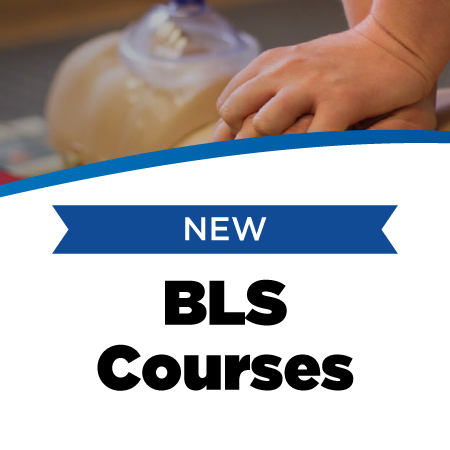

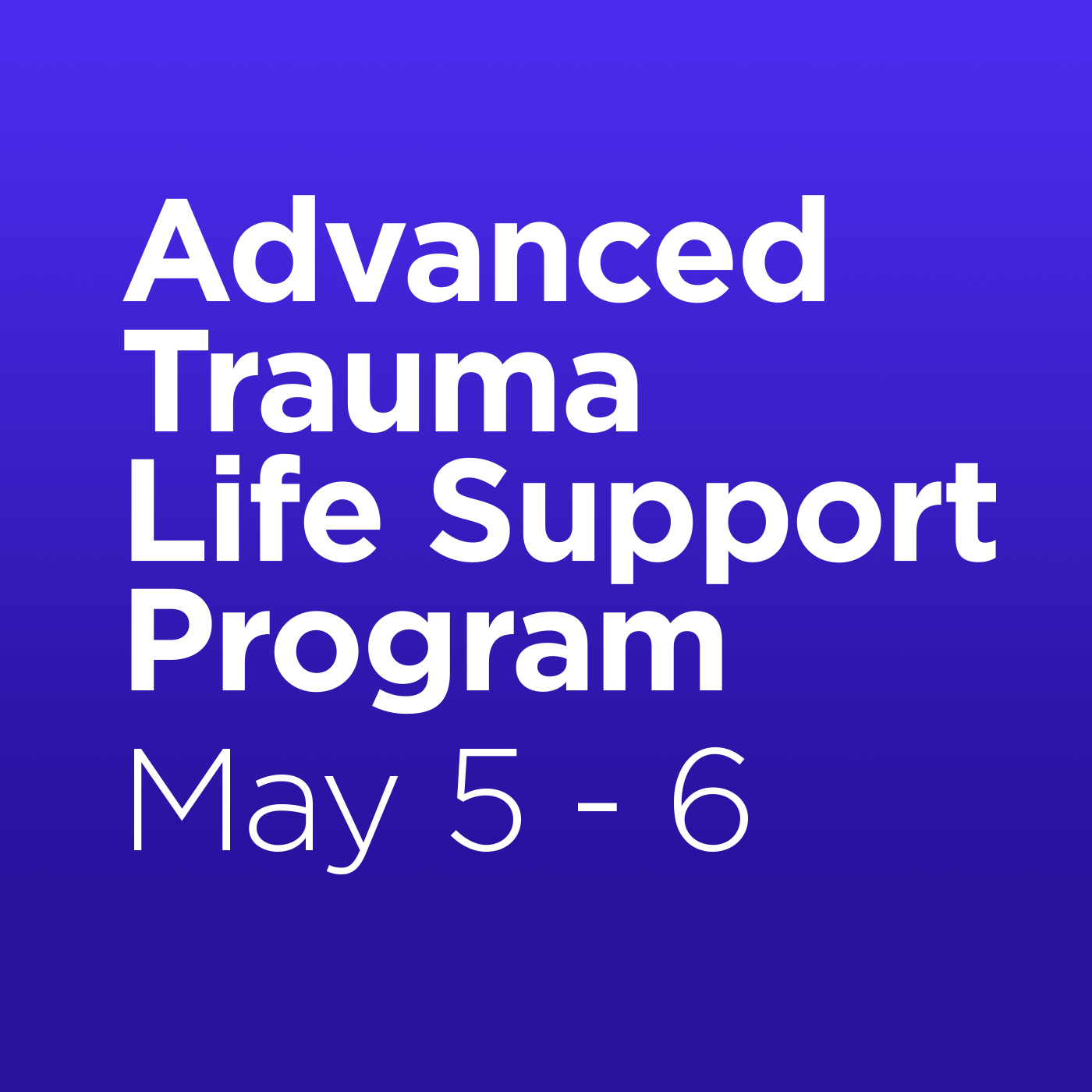

NOSM University’s Mini Med School sessions are coming up and open to the general public. They will be hosting two sessions, with the in-person sessions at NOSM University, Thunder Bay campus. The session will be live-streamed to the Thunder Bay 55 Plus Centre, as well as the Marathon, North Shore, and Wawa Family Health Teams.
Register at https://event.fourwaves.com/minimed2025/registration.
March 3, 2025 at 7:00 p.m. – 8:00 p.m.
Objectives: By the end of this session, participants will be able to describe what diabetes is and its associated risk factors. Participants will also be able to recognize how diabetes affects the body, plan for preventing complications, and identify effective lifestyle and pharmacological strategies to manage diabetes
March 17, 2025 at 7:00 p.m. – 8:00 p.m.
Objectives: By the end of this session, participants will be able to identify the different causes of back pain, list symptoms of life-threatening back pain, and develop a plan for preventing and managing mechanical lower back pain.
Feedback will be collected from attendees to evaluate areas that need change to create a more robust event in 2026.


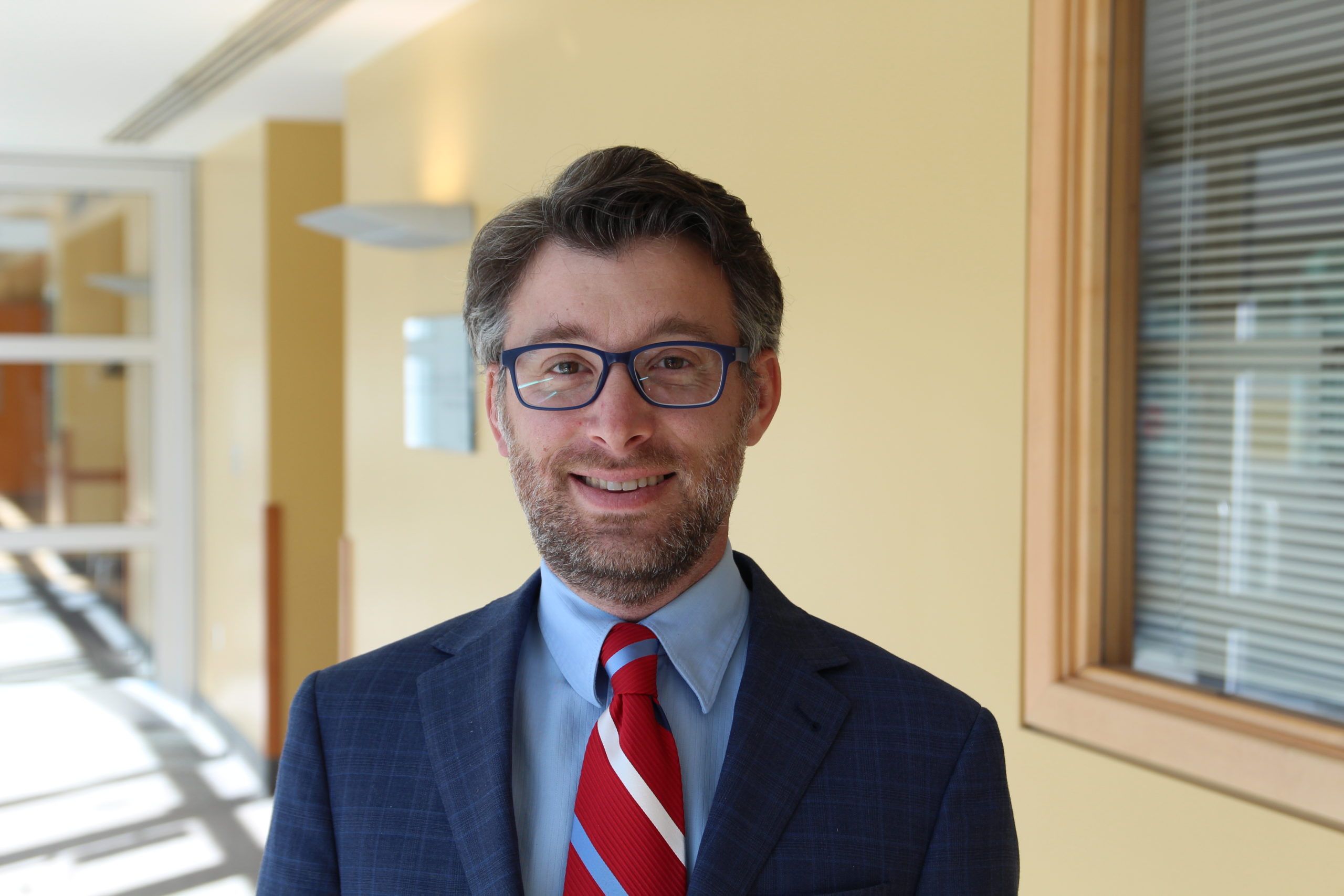
Shared on behalf of Dr. Rhonda Crocker Ellacott, President and CEO, Thunder Bay Regional Health Sciences Centre; CEO, Thunder Bay Regional Health Research Institute
I am pleased to announce that Justin Garofalo has accepted the position of Vice President, Facilities, Capital Planning, Support Services, and Chief Financial Officer.
In this position, Justin will report to the President and CEO and as a member of the Senior Leadership Council, Justin will provide leadership to support the Hospital’s mission, vision and goals as aligned to our Strategic Plan. In this role, Justin will serve as the Chief Financial Officer for both the Hospital and the Health Research Institute, and will oversee Facilities, Capital Planning, Support Services, Financial Services, Decision Support, and Cyclotron.
Justin has been serving as Interim Vice President and Chief Financial Officer since August 21, 2024. Since this time, Justin has supported and improved operations throughout the Hospital and ensured financial stability. Justin has also shown to be a very valued member of the Senior Leadership Council and a team leader throughout his interim portfolio and beyond.
Justin’s educational background includes an Honours Bachelor of Commerce Degree majoring in Accounting, an Executive Master of Business Administration (EMBA) from the University of Fredericton in 2014 and a Chartered Professional Accountant (CPA, CA) designation with the Institute of Chartered Accountants of Ontario. Throughout Justin’s professional journey, he has held numerous positions within the financial sector and hospital setting. He possesses strong financial acumen, leadership skills, and interpersonal skills; all instrumental in his success and those that have had the honour of working with Justin.
Please join me in congratulating Justin on his appointment to his new position that will take effect February 18, 2025. Details on any changes with reporting relationships and the transition of portfolios will be forthcoming.

Shared on behalf of Dr. Rhonda Crocker Ellacott, President and CEO, Thunder Bay Regional Health Sciences Centre; CEO, Thunder Bay Regional Health Research Institute
In follow-up to the appointment into the role of Vice President, Facilities, Capital Planning, Support Services, and Chief Financial Officer (CFO) of both TBRHSC and TBRHRI, please note the following transition of portfolios that will be effective February 24, 2025:
I would like to take this opportunity to thank both Jeannine and Dino who have diligently overseen the above portfolios during this interim period. Their guidance and support have ensured continuity of our operations and shown exemplary leadership.
Jessica Logozzo, VP, Strategy and Regional Transformation, will continue to oversee Information Technology and Information Services at this time.
We appreciate your support as we re-balance our operations.

Shared on behalf of Infection Prevention and Control
Please be advised that the respiratory outbreak has been declared OVER at TBRHSC-TCU (Transitional Care Unit) inpatient unit. All restrictions have been lifted.
Outbreak #2262-2025-00016
Please share this information with the appropriate staff.
As always, our number one priority is the safety of patients and their families, staff and visitors. The department of Infection Prevention and Control encourages everyone to keep applying the routine practices of hand hygiene, proper use of PPE, equipment cleaning, and the appropriate admission screening of all patients. Please set an example for staff and students and assist us by maintaining compliance and due diligence.
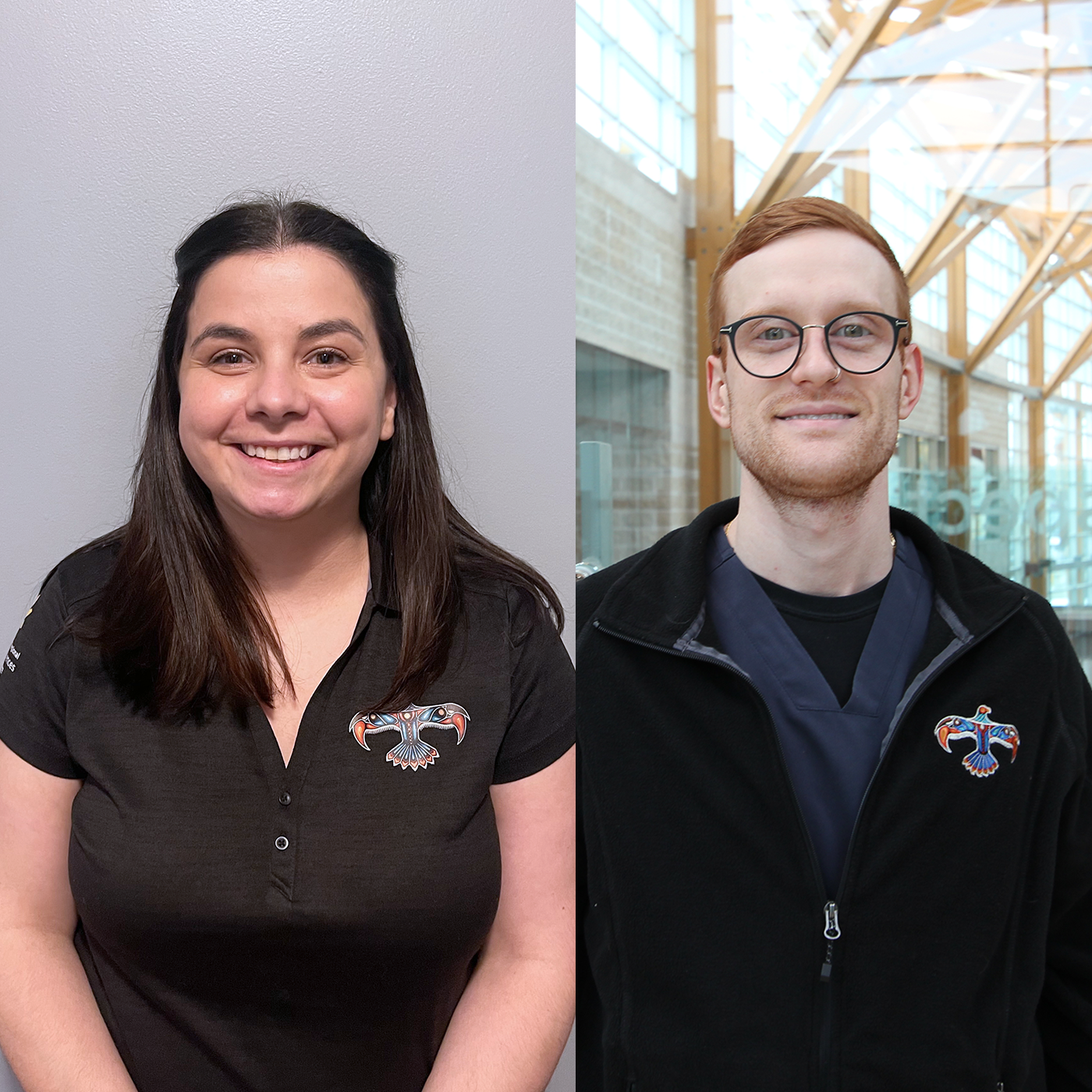
In collaboration with the existing provincial transport teams and ORNGE, Thunder Bay Regional Health Sciences Centre’s Paediatric Emergency Transport Team is drastically improving access to care and reducing wait times for patients in communities across Northwestern Ontario, so they can receive the emergency care they need as fast as possible.
The transport team will eventually operate 24/7 and will consist of one registered respiratory therapist (RRT) and one registered nurse (RN), supported by a paediatrician.
We’d like to introduce you to a couple of vital members of the PETT — Jordan, an RRT, and Michelle, an RN.
Name: Jordan Z.
Position: Transport Registered Respiratory Therapist
What is your role on the Paediatric Emergency Transport Team?
General duties that fall under the RRT role that is completed within the hospital (airway management, invasive and non-invasive ventilation management, oxygen therapy, etc.), second assist for Transport RN (intravenous line insertion, blood collection and testing, medication delivery, second check for medications, etc.), and extended advanced skills (intraosseous needle insertion, chest tube insertion, needle thoracentesis).
Why did you want to be a part of this team?
Being a part of a new program is always exciting and I wanted to be a part of it. Gaining enhanced skills that translate to my every day practice.
How does having a team of individuals from diverse backgrounds contribute to the team’s overall success?
Having a team filed with individuals with diverse backgrounds and skills contributes to the success of this program by giving alternate perspectives and ideas on patient care, and it broadens overall skillset which increases the ability to problem solve and adapt in high stress scenarios.
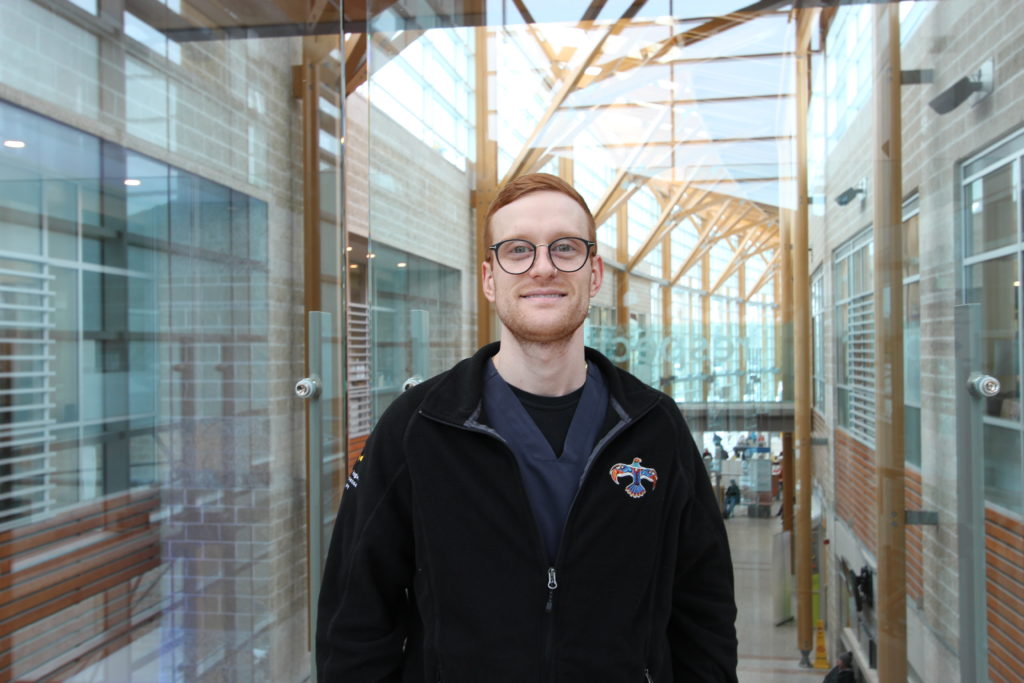
Name: Michelle Lockhart
Position: Registered Nurse, NICU/PETT
What is your role on the Paediatric Emergency Transport Team?
As a registered nurse on the Paediatric Emergency Transport Team, my role is to provide critical care to paediatric patients during transport to and from various health care facilities. This involves assessing the patient’s condition, managing any medical needs, and ensuring their safety throughout the journey. We may be transporting a patient from TBRHSC to a tertiary paediatric hospital for specialized care, transporting them back from the tertiary centre, or transporting them to TBRHSC from a rural or northern hospital or nursing station. I work in a team with a registered respiratory therapist to stabilize the patient and provide interventions like administering medications, monitoring vital signs, and performing or assisting with life-saving procedures as needed.
Why did you want to be a part of this team?
I wanted to be a part of this team because I’m passionate about providing specialized, life-saving care to critically ill or injured neonatal and paediatric patients, and I thrive in fast-paced, high-pressure environments. Working on this team allows me to use my skills to make a tangible difference during critical moments. It’s an opportunity to collaborate with a dedicated group of health care professionals, with the added challenge of delivering complex care outside of a traditional hospital setting. Most importantly, I’m motivated by the chance to support both the children and their families during some of their most vulnerable moments, ensuring they feel safe and cared for during transport.
How does having a team of individuals from diverse backgrounds contribute to the team’s overall success?
Having a team of individuals from diverse backgrounds greatly contributes to the team’s overall success by bringing different perspectives, experiences, and skill sets that enhance problem-solving and decision making. Diverse teams are better equipped to identify and adapt to the unique needs of patients, improving patient care and family interactions.


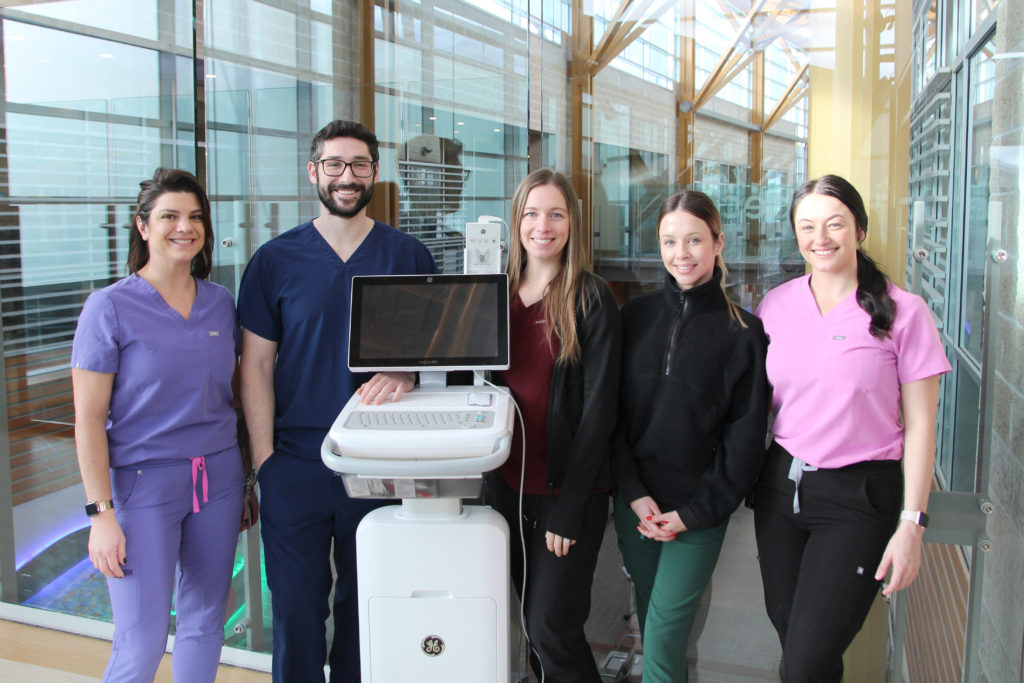
On February 14, as part of Heart Month, we at Thunder Bay Regional Health Sciences Centre (TBRHSC) recognize the dedication and expertise of our Registered Cardiology Technologists (RCTs) and Electrocardiogram (ECG) Technicians who play a vital role in the Cardiac Diagnostics Department.
RCTs are highly trained health care professionals who contribute to every aspect of cardiology, working in specialized areas such as:
Cardiology Technologists are integral to patient care, working alongside cardiologists and other health care physicians to ensure timely and accurate diagnose for heart patients across our region.
To become an RCT, you must first complete a Canadian Society of Cardiology Technologists (CSCT)-approved Cardiology Technology program and successfully pass the CSCT National Exam. There are many schools across the county with multiple delivery methods to suit most everyone’s situation.
RCTs are in high demand and there is the option of on the job training for those enrolled in an online program. To learn more about joining our team, please visit https://jobs.tbrhsc.net/.
Join us in celebrating our incredible Cardiac Diagnostics team and their dedication to heart health!
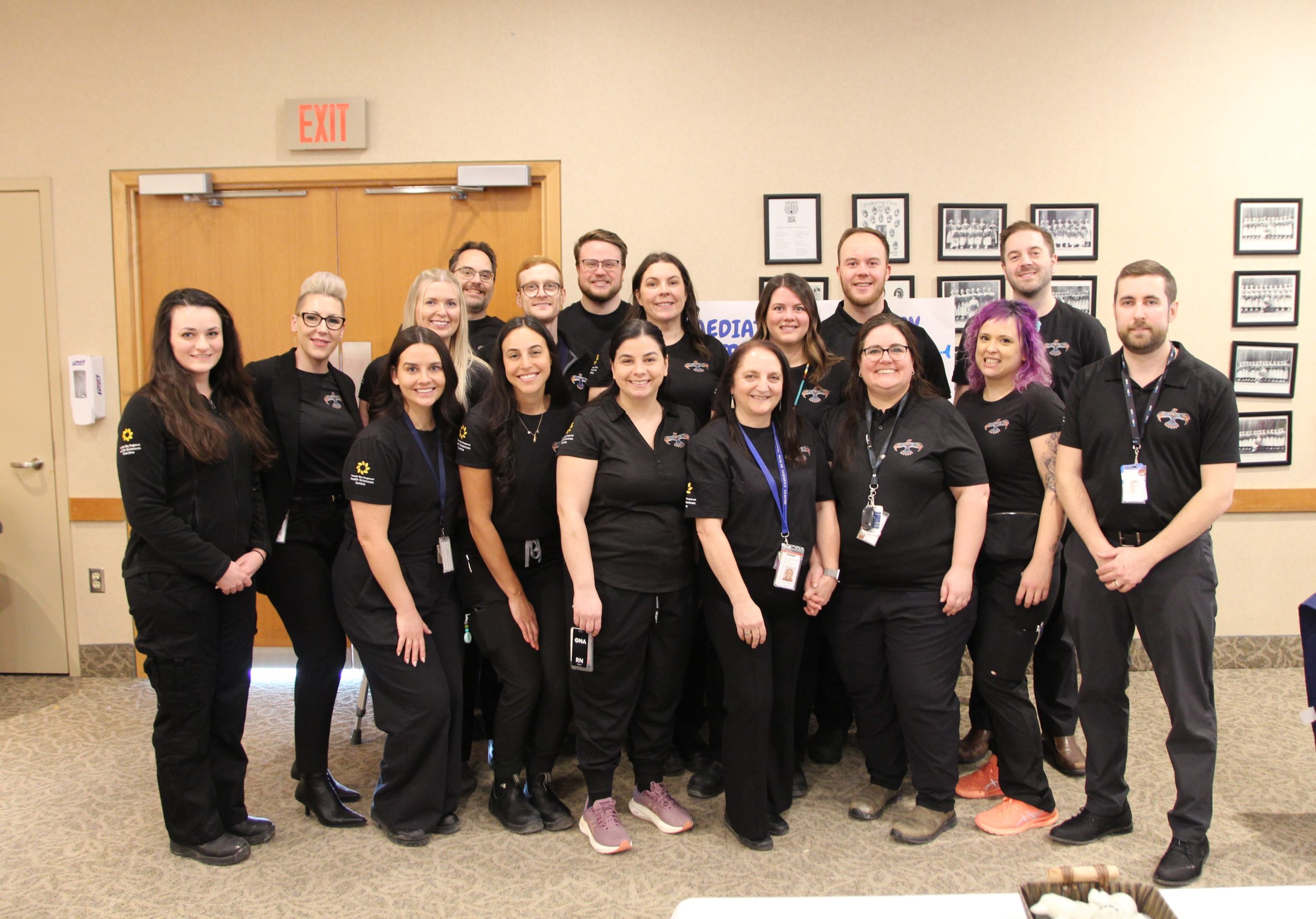

A new team dedicated to transporting neonates and infants has started performing patient transfers at Thunder Bay Regional Health Sciences Centre (TBRHSC).
In collaboration with the existing provincial transport teams and ORNGE, TBRHSC’s Paediatric Emergency Transport Team (PETT) is drastically improving access to care and reducing wait times for patients in communities across Northwestern Ontario, so they can receive the emergency care they need as fast as possible.
Prior to establishing this team, infants in need of emergency care had to wait at hospitals or health centres for transport teams from southern Ontario or Manitoba to be transferred to Thunder Bay or other tertiary centres. TBRHSC’s dedicated team will have a positive impact on timely access to care for infant patients across Northwestern Ontario – particularly for remote and Indigenous communities – and will help save the lives of some of Ontario’s youngest patients.
“This dedicated transport team provides specialized care that supports the unique care needs for the paediatric population of Northwestern Ontario,” said Dr. Rhonda Crocker Ellacott, President and CEO of TBRHSC, CEO of Thunder Bay Regional Health Research Institute. “This vital service will improve health outcomes for newborns and infants requiring urgent or emergent care when transport to a tertiary care centre is needed.”
With this new team, Northwestern Ontario patients aged newborn to 12 months who require urgent or emergent care at a higher level than is in their community, will be transported by PETT and brought to the accepting hospital, depending on their needs. The transport team will eventually operate 24/7 and will consist of one registered respiratory therapist (RRT) and one registered nurse (RN), supported by a paediatrician.
“The specialized Paedatric Emergency Transport Team ensures that infants in the North have access to advanced care when they need it,” states Crystal Edwards, Director of Women and Children’s and Mental Health Programs at TBRHSC and Director of the Transport Team. “This effort brings us closer to harmonizing health care in Northwestern Ontario with the rest of the province. It will allow for relationship-building and shared skills and knowledge between the team and the regional hospitals and remote nursing stations. We are grateful for the support of our partners to make this a reality.”
To support PETT and its operations, a second paediatric transfer deck — used for transporting patients safely and efficiently — was recently added thanks to the generosity of donors to the Thunder Bay Regional Health Sciences Foundation and a matching contribution from the Sandra Schmirler Foundation. While one paediatric transfer deck was already in operation, a second deck was needed to ensure the team can respond to even more critically ill children. To complete this deck, the Health Sciences Foundation successfully fundraised for two essential pieces of equipment: a ventilator and a defibrillator.
The Paediatric Emergency Transport Team will be implemented in phases, starting with coverage to stabilize and transfer newborns and infants up to 12 months of age, with the future plan to transport a larger paediatric population.